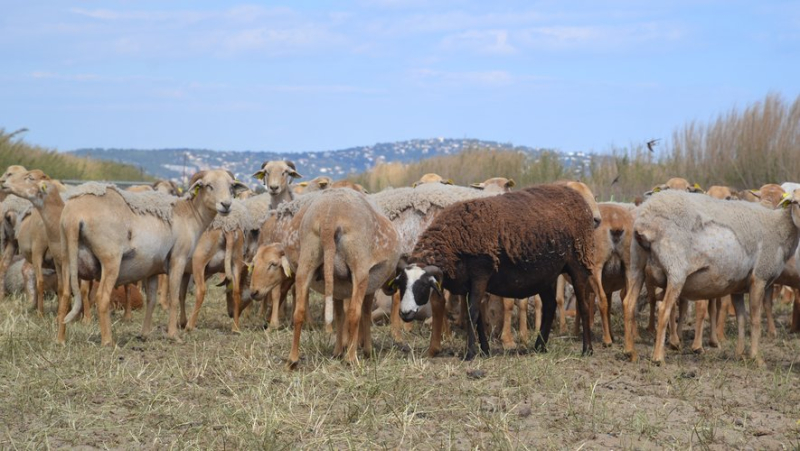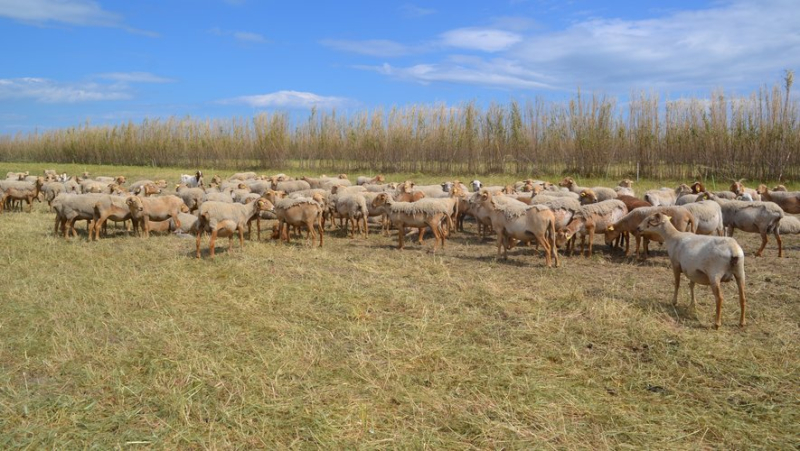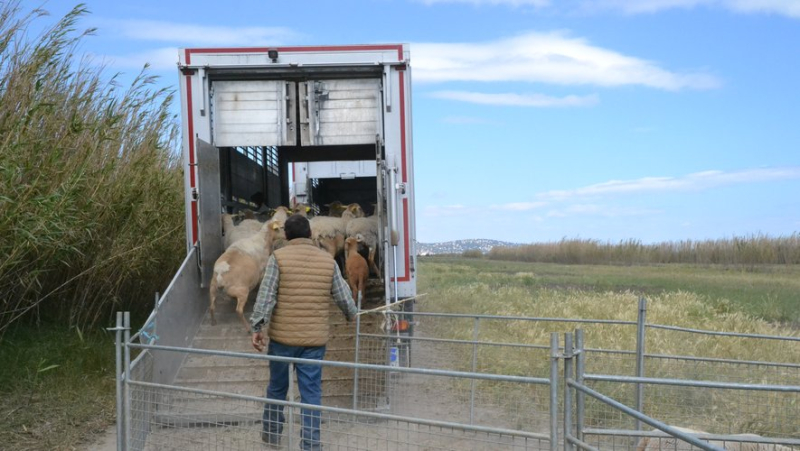Sheep serving a vineyard: after four months on the Lido, 650 animals left Sète and the Château de Villeroy

Around 650 sheep spent the winter on the Lido this year. Midi Libre – Kelman Marti

After tasting the barley next to the vines, the sheep spent the beginning of spring eating alfalfa. Midi Libre – Kelman Marti

Les brebis ont quitté Sète ce mercredi et sont rentrées, chez elles, à Vendres. Midi Libre – Kelman Marti
From January to this Wednesday, April 24, around 650 sheep spent the winter and part of the spring in the vineyard plots of Château de Villeroy, in Sète, to maintain them. An example of effective eco-pastoralism, both for the estate and for the breeder.
"It’is a golf course", exclaims Emmanuel Michel, plot manager wineries of the Château de Villeroy. Beside it, on this unexploited land of the lagoon, 250 sheep graze there for the last day of the year. Early this Wednesday morning before starting to return by truck to their home in Vendres, there were even 650 of them on the Lido. Since last January, the latter have worked hard or gained strength, depending on your point of view.
Free and efficient labor
For Emmanuel Michel, it is the first that applies. These sheep are, for him and the Listel domain, "an excellent free workforce". "From January to March, they were on the vines. Between certain rows, we planted barley to retain the sand which blows away from the plots with the wind. The animals eat the barley and maintain the land for us. Then, as soon as the buds appear on the vines, they are sent to unexploited plots, where they devour the alfalfa", says the one who comes from the Territoire de Belfort.
According to him, the advantages are multiple: "It avoids wasting fuel by saving a trip to the rotary cutter, and their droppings make money ;natural fertilizer. After their passage, the earth is richer in organic matter, which is good when you have poor soil like the sand of the Lido."
For Gabriel Watel, the breeder, this exchange of good practices allows him to have land and free food for part of his herd. "They eat well here. It’s perfect for us, because these are animals intended for consumption", he emphasizes. In total, the sheep grazed around 220 hectares in just four months.




